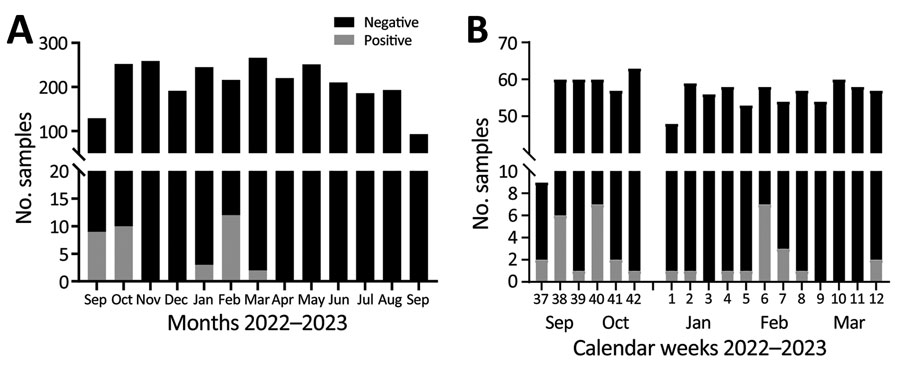Volume 30, Number 3—March 2024
Dispatch
Biphasic MERS-CoV Incidence in Nomadic Dromedaries with Putative Transmission to Humans, Kenya, 2022–2023
Figure 1

Figure 1. Biphasic Middle East respiratory syndrome coronavirus (MERS-CoV) incidence in dromedaries sampled in an abattoir hub, northern Kenya, 2022–2023. A) MERS-CoV RNA detection rates in nasal swab specimens from dromedary camels tested by MERS-CoV upE quantitative reverse transcription PCR. Continuous 12-month sampling (4–5 days per week) took place in Isiolo abattoir from mid-September 2022 to mid-September 2023. Sampling was suspended for 1 week in December 2022 and 1 week in July 2023. B) Detailed weekly overview of MERS-CoV RNA detections, peaking in October 2022 and February 2023.
1These authors contributed equally to this article.
Page created: January 15, 2024
Page updated: February 22, 2024
Page reviewed: February 22, 2024
The conclusions, findings, and opinions expressed by authors contributing to this journal do not necessarily reflect the official position of the U.S. Department of Health and Human Services, the Public Health Service, the Centers for Disease Control and Prevention, or the authors' affiliated institutions. Use of trade names is for identification only and does not imply endorsement by any of the groups named above.